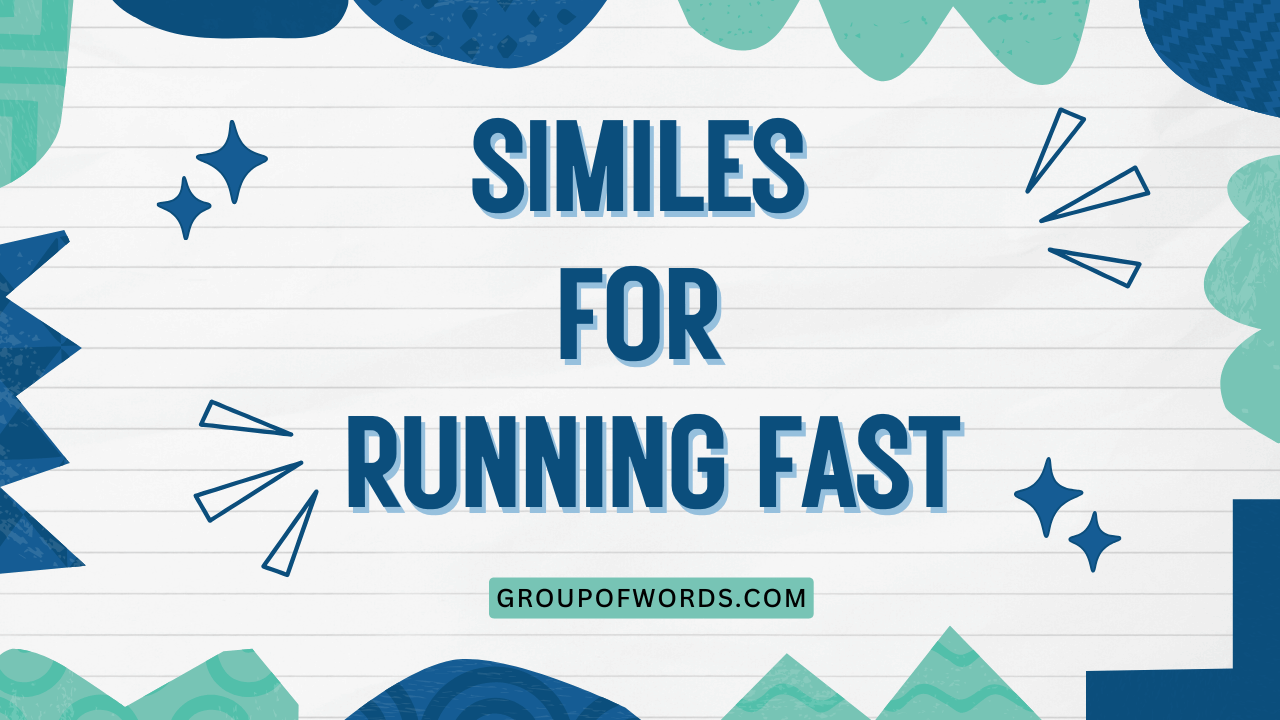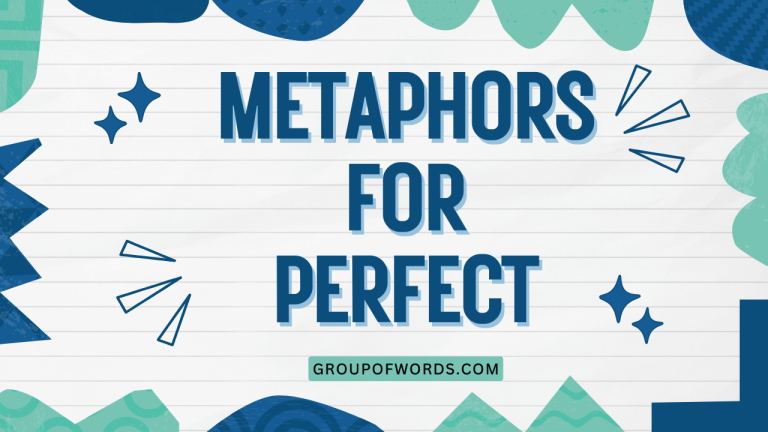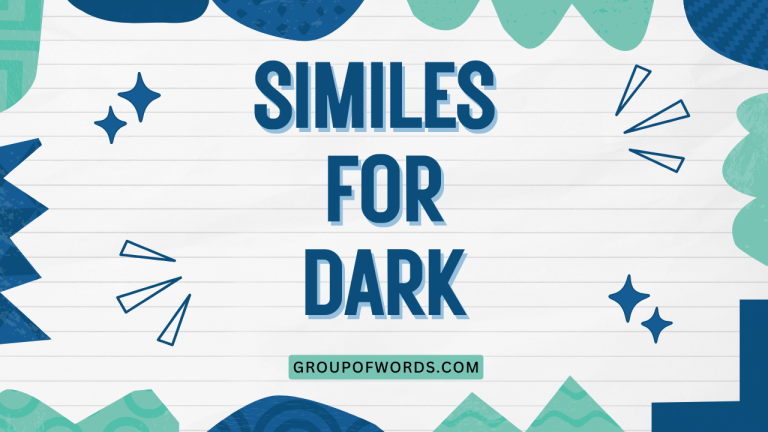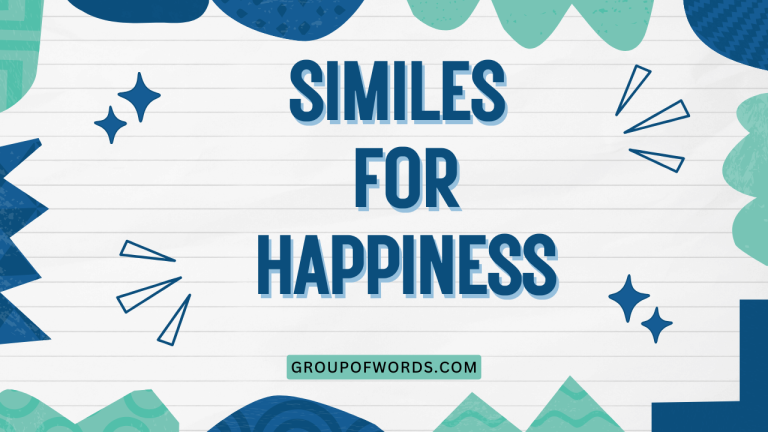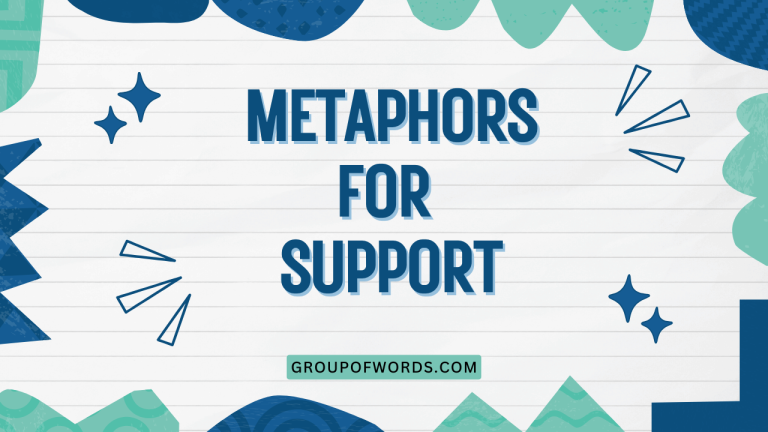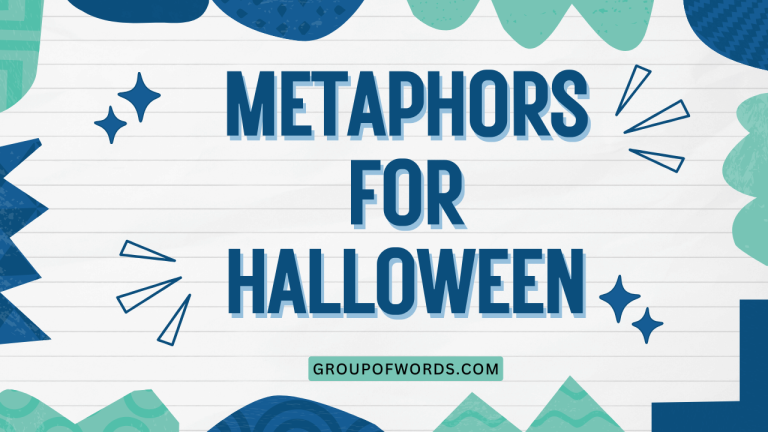Running Fast: Mastering Similes for Speed and Agility
Similes are powerful tools in the English language, allowing us to paint vivid pictures and create impactful comparisons. When describing speed, particularly running fast, similes can elevate simple descriptions into engaging and memorable imagery.
Understanding and using similes effectively not only enhances your writing and speaking but also allows you to appreciate the nuances of the English language. This article delves into the world of similes for running fast, exploring their structure, usage, and various examples to help you master this expressive literary device.
Whether you’re a student, writer, or simply an English enthusiast, this guide offers valuable insights into the art of simile.
This comprehensive guide is designed to help English learners and writers of all levels. From defining what a simile is to providing numerous examples and practical exercises, this article aims to equip you with the knowledge and skills to use similes effectively when describing speed and agility.
By understanding the structure and nuances of similes, you can add depth and creativity to your descriptions, making them more engaging and impactful.
Table of Contents
- What is a Simile?
- The Structure of Similes
- Types of Similes for Running Fast
- Examples of Similes for Running Fast
- Usage Rules for Similes
- Common Mistakes with Similes
- Practice Exercises
- Advanced Topics in Similes
- Frequently Asked Questions
- Conclusion
What is a Simile?
A simile is a figure of speech that directly compares two different things, using the words “like” or “as.” The purpose of a simile is to create a vivid comparison that highlights a shared quality between the two things being compared. Similes are commonly used in literature, poetry, and everyday conversation to make descriptions more engaging and relatable.
They help the audience visualize and understand the subject by relating it to something familiar.
Similes fall under the broader category of figurative language, which includes metaphors, personification, and hyperbole. While similes use explicit comparison words (“like” or “as”), metaphors imply a comparison without using these words.
For example, “He is as fast as a cheetah” is a simile, while “He is a cheetah on the track” is a metaphor. Understanding the difference between similes and metaphors is crucial for effective communication and writing.
In the context of describing running fast, similes can be particularly effective. They allow you to convey the speed and agility of a runner by comparing them to something known for its speed, such as animals, vehicles, or natural phenomena.
This creates a more impactful and memorable image in the reader’s mind.
The Structure of Similes
The basic structure of a simile consists of three main components: the subject, the comparison word (like or as), and the object of comparison. The subject is the thing being described, the comparison word establishes the connection, and the object of comparison is the thing to which the subject is being compared.
Understanding this structure is essential for creating grammatically correct and effective similes.
The general formula for a simile is: Subject + Comparison Word (like/as) + Object of Comparison. For example, in the simile “She runs like the wind,” “she” is the subject, “like” is the comparison word, and “the wind” is the object of comparison. This simple structure allows for a wide range of creative comparisons.
The comparison word “like” is used to indicate similarity or resemblance. The comparison word “as” is used to indicate equality or equivalence in a particular quality.
While both words serve the same general purpose, they can subtly alter the tone and emphasis of the simile. For instance, “He runs as fast as a bullet” emphasizes the sheer speed, while “He runs like a bullet” emphasizes the manner or style of running.
Types of Similes for Running Fast
Similes for running fast can be categorized based on the object of comparison. Common categories include animals, vehicles, natural phenomena, and abstract concepts.
Each category offers unique ways to describe speed and agility, allowing for a diverse range of expressive options.
Animal-Based Similes
Animal-based similes are among the most common and effective for describing running fast. Animals known for their speed, such as cheetahs, horses, and rabbits, provide strong and familiar comparisons.
Using these animals in similes instantly conveys the idea of rapid movement and agility.
Vehicle-Based Similes
Vehicle-based similes compare a runner’s speed to that of fast-moving vehicles, such as cars, trains, and rockets. These similes are particularly effective for emphasizing raw speed and power.
They often evoke a sense of modern technology and intense acceleration.
Nature-Based Similes
Nature-based similes draw comparisons to natural phenomena like the wind, lightning, and rivers. These similes can convey both speed and fluidity, emphasizing the natural and effortless quality of the runner’s movement.
They often evoke a sense of freedom and unrestrained energy.
Abstract Similes
Abstract similes compare a runner’s speed to abstract concepts like time, thought, or light. These similes are less literal and more metaphorical, often used to emphasize the speed of a runner in a more conceptual or philosophical way.
They can add depth and complexity to the description.
Examples of Similes for Running Fast
Here are some examples of similes for running fast, categorized by the type of comparison used. Each category provides a range of options to effectively describe speed and agility.
These examples will illustrate the versatility and impact of similes in descriptive writing.
Animal-Based Similes Examples
The following table provides a comprehensive list of animal-based similes that effectively describe running fast. These similes leverage the inherent speed and agility associated with these animals to create vivid and relatable comparisons.
| Simile | Explanation |
|---|---|
| He runs like a cheetah. | Compares the runner’s speed to the fastest land animal. |
| She runs as fast as a hare. | Highlights the runner’s quickness and agility. |
| They ran like startled deer. | Emphasizes the sudden burst of speed and agility. |
| He moves like a greyhound on the track. | Focuses on the streamlined and efficient movement. |
| She sprinted as fast as a racehorse. | Conveys power and speed over a distance. |
| He runs like a gazelle across the savanna. | Emphasizes grace and swiftness. |
| She darted as fast as a hummingbird. | Highlights quick, erratic movements. |
| They charged like a rhino. | Conveys powerful and unstoppable speed. |
| He ran like a fox chasing its prey. | Emphasizes focus and determination. |
| She moved as fast as a scorpion striking. | Highlights sudden and deadly speed. |
| He runs like a roadrunner. | Compares to the cartoon character known for speed. |
| She runs as fast as a peregrine falcon diving. | Highlights incredible speed and precision. |
| They ran like a pack of wolves. | Emphasizes coordinated and relentless speed. |
| He moves like a spider across its web. | Focuses on agility and speed in a confined space. |
| She sprinted as fast as a frightened jackrabbit. | Conveys a burst of speed fueled by fear. |
| He runs like a salmon swimming upstream. | Emphasizes determined effort and speed against resistance. |
| She darted as fast as a mongoose. | Highlights quick, agile movements to evade danger. |
| They charged like a stampede of bison. | Conveys immense power and unstoppable speed in a group. |
| He ran like a cheetah hunting a gazelle. | Emphasizes predatory speed and focus. |
| She moved as fast as a cobra striking. | Highlights sudden and deadly speed. |
| He runs like a startled squirrel. | Highlights quick, erratic movements. |
| She runs as fast as a dolphin swimming. | Highlights fluidity and speed. |
| They ran like ants fleeing a flood. | Emphasizes urgency and collective speed. |
Vehicle-Based Similes Examples
This table showcases vehicle-based similes to describe running fast. These similes use the speed and power of vehicles to create impactful comparisons, often emphasizing raw speed and acceleration.
| Simile | Explanation |
|---|---|
| He runs like a speeding bullet. | Conveys extreme speed and directness. |
| She runs as fast as a race car. | Emphasizes high speed and competitive performance. |
| They accelerated like a rocket. | Highlights rapid acceleration and power. |
| He moved like a high-speed train. | Focuses on relentless speed and momentum. |
| She sprinted as fast as a jet plane taking off. | Conveys immense power and rapid ascent. |
| He runs like a motorcycle on an open road. | Emphasizes freedom and unrestrained speed. |
| She darted as fast as a drone. | Highlights quick, precise movements. |
| They charged like a runaway train. | Conveys unstoppable and dangerous speed. |
| He ran like a formula one car. | Emphasizes precision and high performance. |
| She moved as fast as a cruise missile. | Highlights speed and accuracy. |
| He runs like a sports car accelerating. | Emphasizes quick acceleration and sleekness. |
| She runs as fast as a bullet train. | Highlights modern high-speed transportation. |
| They ran like a fleet of speedboats. | Emphasizes coordinated and rapid movement. |
| He moved like a hovercraft gliding. | Focuses on smooth and fast movement. |
| She sprinted as fast as a fighter jet. | Conveys immense power and speed. |
| He runs like a bobsled down the track. | Emphasizes speed and precision. |
| She runs as fast as a drag racer. | Highlights extreme acceleration over short distances. |
| They ran like a squadron of fighter planes. | Emphasizes coordinated and rapid movement in the air. |
| He moved like a race drone through the course. | Focuses on agility and speed in a competitive setting. |
| She sprinted as fast as an IndyCar on the straightaway. | Conveys immense power and speed on a racetrack. |
| He runs like a monorail on its track. | Emphasizes smooth and consistent speed. |
| She runs as fast as a hyperloop pod. | Highlights futuristic high-speed transportation. |
| They ran like a convoy of armored vehicles. | Emphasizes coordinated and unstoppable speed. |
Nature-Based Similes Examples
The following table presents nature-based similes for describing running fast. These similes use elements of nature to convey both speed and fluidity, often emphasizing the natural and effortless quality of the runner’s movement.
| Simile | Explanation |
|---|---|
| He runs like the wind. | Conveys effortless speed and freedom. |
| She runs as fast as lightning. | Emphasizes sudden and intense speed. |
| They surged forward like a flood. | Highlights overwhelming and unstoppable force. |
| He moved like a river flowing downhill. | Focuses on smooth and continuous movement. |
| She sprinted as fast as a hurricane. | Conveys immense power and destructive speed. |
| He runs like a tornado through the field. | Emphasizes chaotic and destructive speed. |
| She darted as fast as a shooting star. | Highlights quick, fleeting movements. |
| They charged like an avalanche. | Conveys unstoppable and overwhelming force. |
| He ran like a wildfire spreading. | Emphasizes rapid and uncontrolled spread. |
| She moved as fast as a tsunami crashing. | Highlights immense power and destructive speed. |
| He runs like a sandstorm blowing. | Emphasizes chaotic and rapid movement. |
| She runs as fast as a bolt of electricity. | Highlights sudden and intense energy. |
| They ran like a cloudburst descending. | Emphasizes sudden and overwhelming force. |
| He moved like a lava flow. | Focuses on relentless and unstoppable movement. |
| She sprinted as fast as a solar flare. | Conveys immense energy and speed. |
| He runs like a waterfall cascading. | Emphasizes powerful and continuous flow. |
| She runs as fast as a tidal wave. | Highlights immense power and speed. |
| They ran like a swarm of locusts. | Emphasizes coordinated and destructive speed. |
| He moved like a dust devil whirling. | Focuses on chaotic and rapid movement. |
| She moved as fast as a geyser erupting. | Highlights sudden and powerful speed. |
| He runs like a blizzard raging. | Emphasizes chaotic and overwhelming force. |
| She runs as fast as a falling star. | Highlights quick and fleeting speed. |
| They ran like a flash flood surging. | Emphasizes sudden and overwhelming force. |
Abstract Similes Examples
This table provides examples of abstract similes used to describe running fast. These similes use abstract concepts to emphasize the speed of a runner in a more conceptual or philosophical way, adding depth and complexity to the description.
| Simile | Explanation |
|---|---|
| He runs like time itself. | Conveys relentless and unstoppable speed. |
| She runs as fast as a thought. | Emphasizes instantaneous speed and mental agility. |
| They moved like a blur. | Highlights the difficulty in perceiving their speed. |
| He ran like a fleeting dream. | Focuses on the ephemeral and transient nature of speed. |
| She sprinted as fast as light. | Conveys the ultimate speed and energy. |
| He runs like a whisper in the wind. | Emphasizes subtle yet rapid movement. |
| She darted as fast as an idea sparking. | Highlights quick, innovative movements. |
| They charged like a surge of adrenaline. | Conveys intense and overwhelming energy. |
| He ran like a memory fading. | Emphasizes the transient and elusive nature of speed. |
| She moved as fast as a heartbeat. | Highlights quick and vital speed. |
| He runs like a rumor spreading. | Emphasizes rapid and uncontrollable dissemination. |
| She runs as fast as a fear igniting. | Highlights sudden and intense emotion. |
| They ran like a secret unfolding. | Emphasizes rapid and inevitable revelation. |
| He moved like an illusion appearing. | Focuses on deceptive and fleeting speed. |
| She sprinted as fast as hope soaring. | Conveys uplifting and rapid progress. |
| He runs like a shadow lengthening. | Emphasizes subtle and continuous movement. |
| She runs as fast as a truth emerging. | Highlights inevitable and rapid revelation. |
| They ran like a wave of emotion. | Emphasizes overwhelming and collective energy. |
| He moved like a vision appearing. | Focuses on fleeting and ethereal speed. |
| She sprinted as fast as inspiration striking. | Conveys sudden and powerful creativity. |
| He runs like a melody flowing. | Emphasizes smooth and continuous movement. |
| She runs as fast as a dream vanishing. | Highlights quick and elusive speed. |
| They ran like a story unfolding. | Emphasizes rapid and engaging progression. |
Usage Rules for Similes
Using similes effectively requires understanding certain rules and guidelines. These rules ensure that your similes are clear, impactful, and grammatically correct.
Paying attention to these rules will help you avoid common mistakes and create more compelling descriptions.
Clarity is Key: The comparison should be clear and easily understood by the audience. Avoid obscure or overly complex comparisons that might confuse the reader. The object of comparison should be something familiar and relatable.
Relevance Matters: The quality being compared should be relevant to both the subject and the object of comparison. The comparison should highlight a shared characteristic that is significant and contributes to the overall description. For example, comparing a runner to a slow-moving object would be illogical and ineffective.
Originality Enhances Impact: While common similes can be effective, strive for originality to make your writing more engaging and memorable. Avoid clichés and try to come up with fresh and creative comparisons. A unique simile can capture the reader’s attention and create a lasting impression.
Grammatical Consistency: Ensure that your similes are grammatically consistent. The tense and structure of the simile should align with the surrounding text. Pay attention to subject-verb agreement and pronoun usage to avoid errors.
Common Mistakes with Similes
Even experienced writers can make mistakes when using similes. Recognizing these common errors and understanding how to correct them is essential for effective communication.
Here are some frequent mistakes to avoid:
Using Metaphors Instead of Similes: Confusing similes with metaphors is a common error. Remember that similes use “like” or “as” to make a direct comparison, while metaphors imply a comparison without using these words.
Incorrect: He is a cheetah. (Metaphor)
Correct: He is as fast as a cheetah. (Simile)
Illogical Comparisons: Making comparisons that don’t make sense or are irrelevant to the subject can confuse the reader and weaken the description.
Incorrect: She runs like a turtle.
Correct: She runs like a deer.
Overusing Similes: Using too many similes in a short passage can make your writing sound repetitive and contrived. Use similes sparingly and strategically to maximize their impact.
Clichéd Similes: Relying on overused similes can make your writing sound unoriginal and uninspired. Strive for fresh and creative comparisons to make your writing stand out.
Incorrect: He runs as fast as the wind. (Cliché)
Correct: He runs like a rogue wave crashing against the shore.
The following table provides a clear comparison of incorrect and correct usages of similes, highlighting common mistakes and their appropriate corrections.
| Incorrect | Correct | Explanation |
|---|---|---|
| He is a rocket. | He is as fast as a rocket. | Using a metaphor instead of a simile. |
| She runs like a snail. | She runs like a hare. | Illogical comparison: snails are slow. |
| He runs as fast as the wind. | He runs like a summer storm. | Avoiding clichés by using original comparisons. |
| She is running like a cheetah, a race car, and a bullet! | She is running as fast as a cheetah. | Avoiding overuse of similes in a single sentence. |
| They ran like a cloud. | They ran like a storm. | Ensuring the comparison is relevant to speed. |
| He moves as slow as a jet. | He moves as fast as a jet. | Using the correct adjective to match the intended meaning. |
| She sprints like. | She sprints like lightning. | Completing the simile with a relevant comparison. |
| They run like the run. | They run like the wind. | Correcting grammatical errors and ensuring clarity. |
| He ran as quick as a horse. | He ran as quickly as a horse. | Using the correct adverb form for comparison. |
| She is a light on her feet. | She is as light as a feather on her feet. | Making a direct comparison using “as.” |
Practice Exercises
Test your understanding of similes with these practice exercises. Each exercise focuses on different aspects of simile usage, from identifying similes to creating your own.
Answers are provided at the end of each exercise.
Exercise 1: Identifying Similes
Identify the similes in the following sentences. Underline the simile in each sentence.
- He runs like a machine, never tiring.
- Her speed was a blur to the spectators.
- They moved as fast as a swarm of bees.
- The runner is a cheetah on the track.
- She sprinted like lightning across the finish line.
- He runs with the grace of a gazelle.
- His legs pumped like pistons.
- She’s as quick as a hiccup.
- They took off like startled birds.
- He flowed like water around his opponents.
Answers:
- He runs like a machine, never tiring.
- Her speed was a blur to the spectators. (Metaphor)
- They moved as fast as a swarm of bees.
- The runner is a cheetah on the track. (Metaphor)
- She sprinted like lightning across the finish line.
- He runs with the grace of a gazelle.
- His legs pumped like pistons.
- She’s as quick as a hiccup.
- They took off like startled birds.
- He flowed like water around his opponents.
Exercise 2: Completing Similes
Complete the following similes with an appropriate object of comparison.
- He runs as fast as a __________.
- She sprints like __________.
- They move like __________.
- His speed is like __________.
- She darts like __________.
- He’s as quick as __________.
- They charge like __________.
- She flows like __________.
- He accelerates like __________.
- She is as agile as __________.
Answers: (Possible answers)
- He runs as fast as a cheetah.
- She sprints like lightning.
- They move like a whirlwind.
- His speed is like a rocket.
- She darts like a hummingbird.
- He’s as quick as a flash.
- They charge like a stampede.
- She flows like a river.
- He accelerates like a race car.
- She is as agile as a monkey.
Exercise 3: Creating Similes
Create your own similes to describe the following scenarios.
- A runner starting a race.
- A runner sprinting towards the finish line.
- A runner’s speed on a track.
- A runner’s agility while dodging obstacles.
- A runner’s stamina during a marathon.
- A runner’s movements in a relay race.
- A runner’s speed compared to a vehicle.
- A runner’s speed compared to an animal.
- A runner’s speed compared to a natural phenomenon.
- A runner’s speed compared to an abstract concept.
Answers: (Possible answers)
- A runner starting a race: He exploded off the blocks like a cannon firing.
- A runner sprinting towards the finish line: She sprinted towards the finish line like a heat-seeking missile.
- A runner’s speed on a track: His speed on the track was like a blur to the onlookers.
- A runner’s agility while dodging obstacles: He dodged the obstacles like a mongoose evading a snake.
- A runner’s stamina during a marathon: Her stamina during the marathon was like an endless reservoir.
- A runner’s movements in a relay race: Their movements in the relay race were like a well-oiled machine.
- A runner’s speed compared to a vehicle: He runs as fast as a Formula One car on the racetrack.
- A runner’s speed compared to an animal: She runs as fast as a cheetah hunting its prey.
- A runner’s speed compared to a natural phenomenon: They moved like a flash flood surging through a valley.
- A runner’s speed compared to an abstract concept: He runs as fast as a fleeting thought.
Advanced Topics in Similes
For advanced learners, exploring more complex aspects of similes can enhance their writing and understanding of the English language. This includes understanding implied similes, extended similes, and the use of similes in different literary styles.
Implied Similes: An implied simile is one in which the comparison word (“like” or “as”) is omitted, but the comparison is still evident through the context. Recognizing and using implied similes can add subtlety and nuance to your writing.
Example: “He flew across the track.” (Implies a comparison to something that flies, like a bird or plane.)
Extended Similes: An extended simile is a simile that is developed over several lines or sentences. This allows for a more detailed and elaborate comparison, creating a more vivid and impactful image in the reader’s mind.
Example: “She ran like a river flowing towards the sea, unstoppable and relentless, carving its path through the landscape, never faltering in its course.”
Similes in Literary Styles: Different literary styles may employ similes in unique ways. Understanding how similes are used in poetry, prose, and drama can help you appreciate their versatility and adapt your own writing accordingly.
Frequently Asked Questions
Here are some frequently asked questions about similes, along with detailed answers to help clarify any confusion.
- What is the difference between a simile and a metaphor?
- Can a simile be a cliché?
- How do I create a good simile?
- Is it okay to use multiple similes in a single paragraph?
- What are the benefits of using similes in writing?
- How can I improve my use of similes?
- Are similes only used in creative writing?
- What should I do if I can’t think of a good simile?
A simile is a direct comparison using “like” or “as,” while a metaphor is an implied comparison without using those words. For example, “He is as fast as a cheetah” (simile) vs.
“He is a cheetah on the track” (metaphor).
Yes, if a simile is overused and has lost its original impact, it becomes a cliché. It’s best to avoid clichés and strive for more original and creative comparisons.
A good simile should be clear, relevant, and original. Choose an object of comparison that is familiar and shares a significant quality with the subject.
Avoid clichés and try to come up with fresh and creative comparisons.
While it’s possible, using too many similes in a short passage can make your writing sound repetitive and contrived. Use similes sparingly and strategically to maximize their impact.
Similes enhance your writing by making descriptions more vivid, engaging, and relatable. They help the audience visualize and understand the subject by relating it to something familiar.
Practice creating and identifying similes. Read widely to see how other writers use similes effectively.
Pay attention to clarity, relevance, and originality when crafting your own similes.
While similes are commonly used in creative writing, they can also be used in other forms of writing, such as journalism, academic writing, and even everyday conversation, to make descriptions more engaging and understandable.
Brainstorm different objects of comparison and consider their qualities. Think about the specific aspect of the subject you want to emphasize.
Use a thesaurus or dictionary to find related words and ideas. If you’re still struggling, focus on other descriptive techniques and come back to similes later.
Conclusion
Mastering similes for describing running fast enhances your ability to create vivid and engaging descriptions. By understanding the structure, types, and usage rules of similes, you can effectively convey the speed and agility of a runner.
Avoiding common mistakes and practicing regularly will further refine your skills and allow you to use similes with confidence and creativity.
Remember, the best similes are clear, relevant, and original. Strive to make your comparisons fresh and impactful, avoiding clichés and overused phrases.
With practice and attention to detail, you can use similes to elevate your writing and create memorable images in the reader’s mind. Continue to explore and experiment with similes to unlock their full potential and add depth to your descriptive abilities.
Happy writing!
